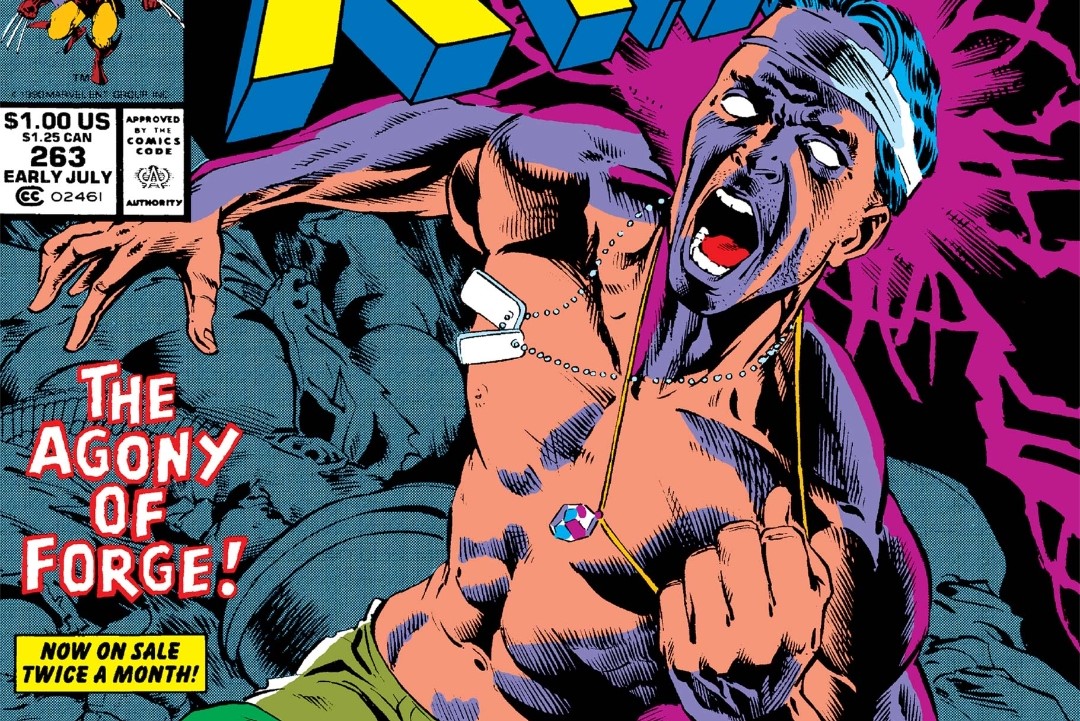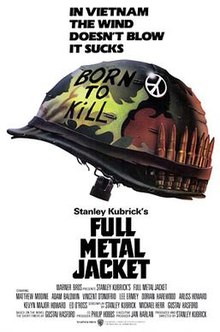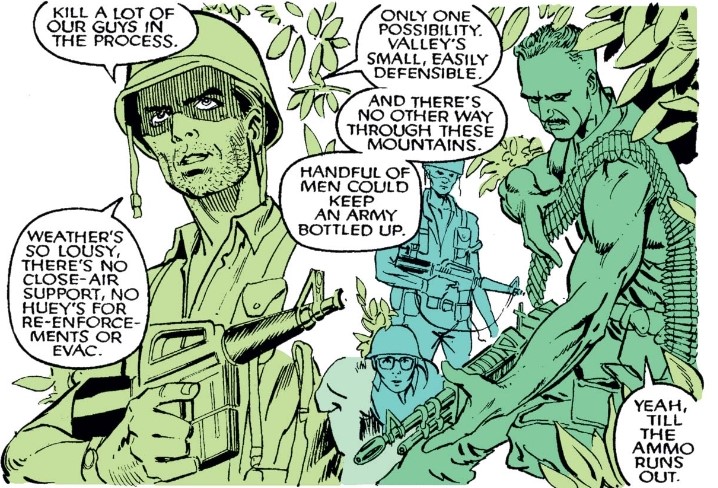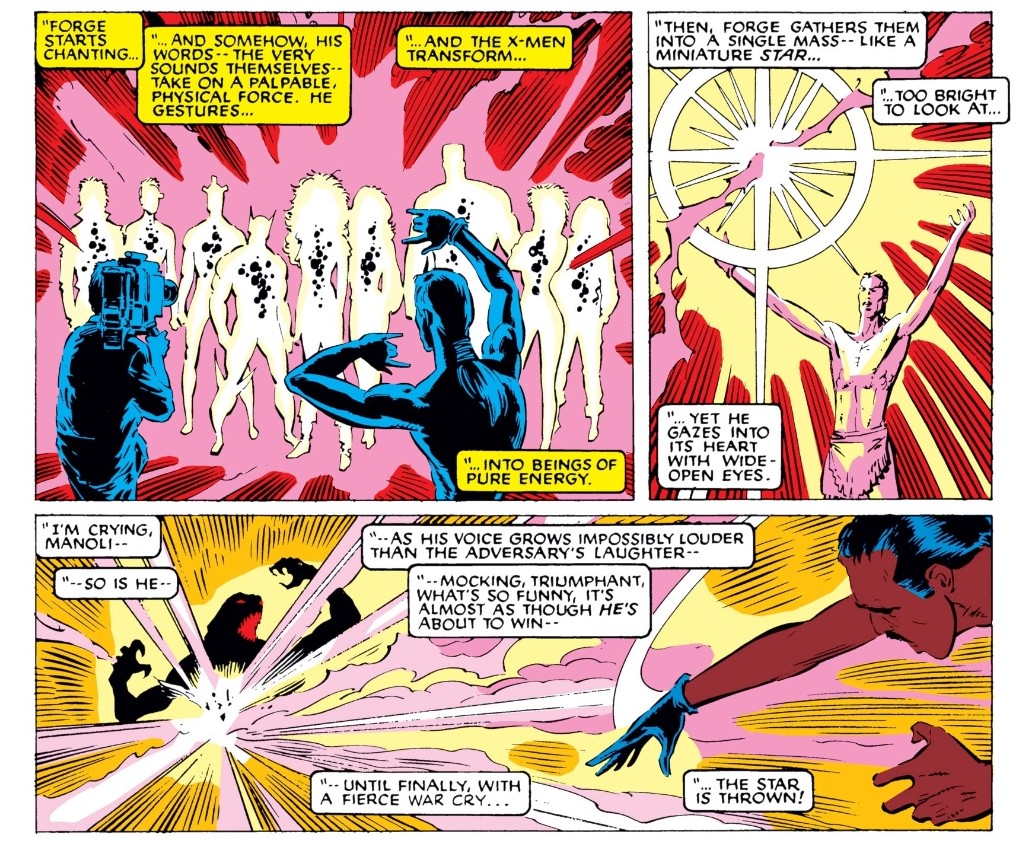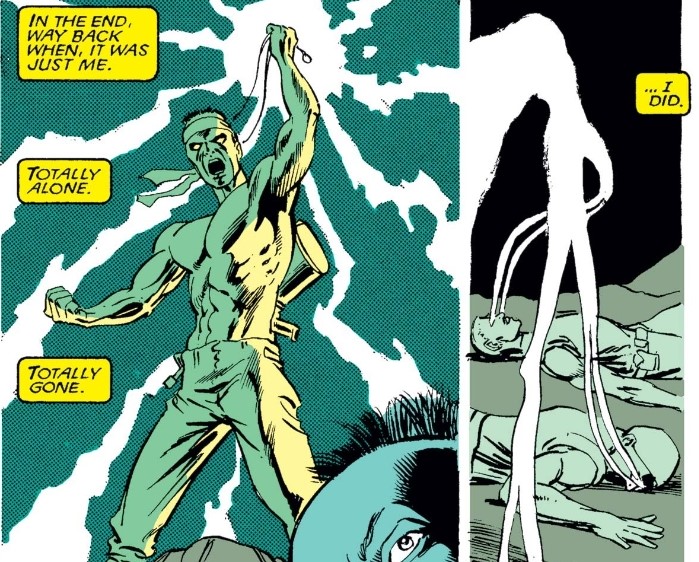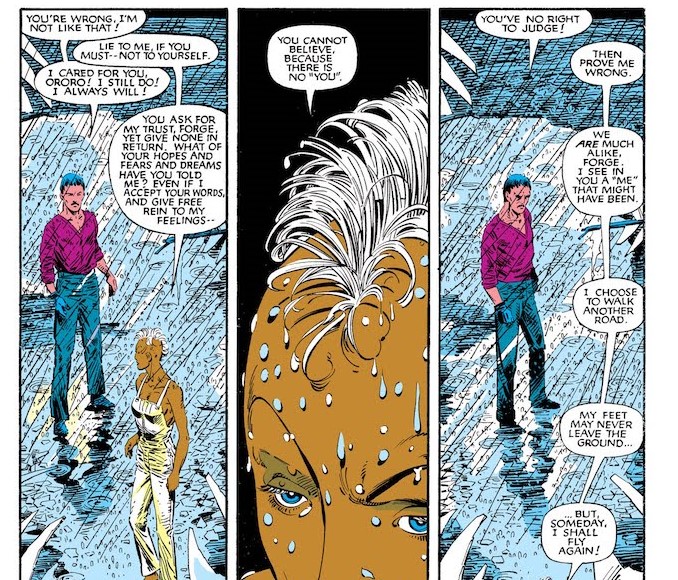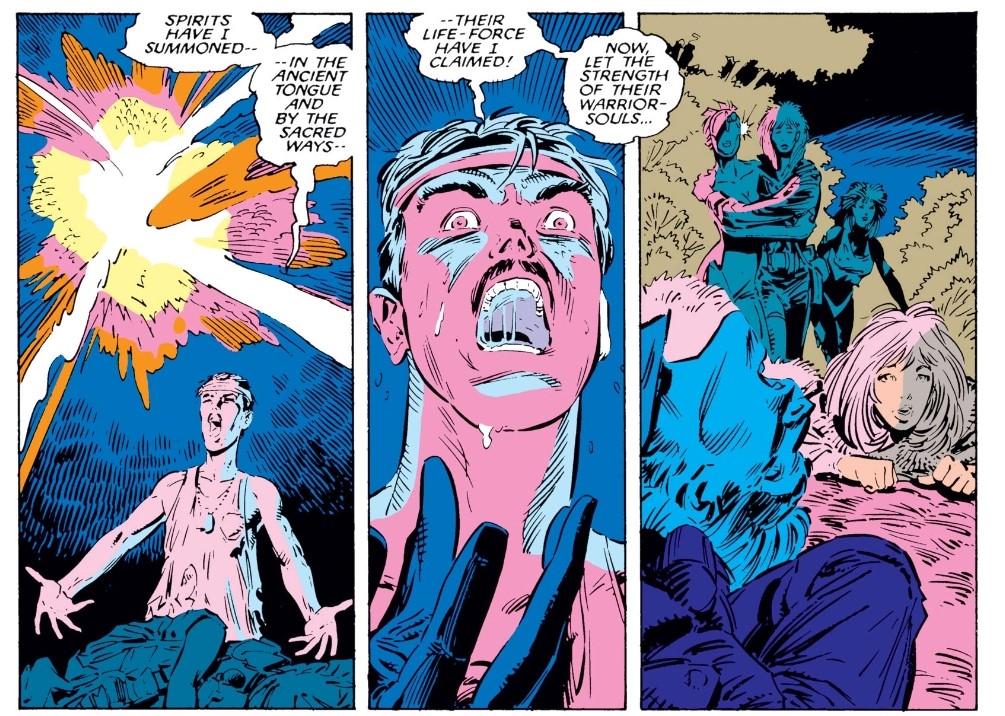Though supernatural in nature, the story of Forge’s invocation of black magic in the midst of the Vietnam War can be seen to form a resonant vehicle by which Claremont was able to explore the concept of PTSD and the spiritual suffering of veterans of the era. #xmen 1/7
The full story was published in UXM #263, the same year as Tim O’Brien’s “The Things They Carried,” at a time when “Tour of Duty” was on CBS, and 3 years after “Full Metal Jacket” hit cinemas. Explorations of the horrors of the Vietnam war were very much in the media current. 2/7
The story presents Forge as a capable and heroic leader...until things go very wrong, and the men under Forge’s command are all killed in action. In response, Forge loses control and casts a dark magic spell. 3/7
As a result, Forge sees himself as a man who has been tainted, who has allied himself with an evil power in response to a psychotic break. He is haunted by this guilt, though may perhaps atone somewhat by repeating the ritual for nobler means in “Fall of the Mutants.” 4/7
The idea of crossing a moral boundary in consequence of a mental break within a desperate and terrifying situation is one that resonates with the accounts provided by veterans of the Vietnam war, and thus Forge’s dark magic forms a counter-intuitively apt representation. 5/7
With that parallel in place (if allowed), Forge’s isolation, depression and paranoia (seen in Lifedeath) speak to the consequences of trauma, while his efforts to go out into the world and redeem himself through the X-Men speak to the pursuit of healing or even absolution. 6/7

 Read on Twitter
Read on Twitter